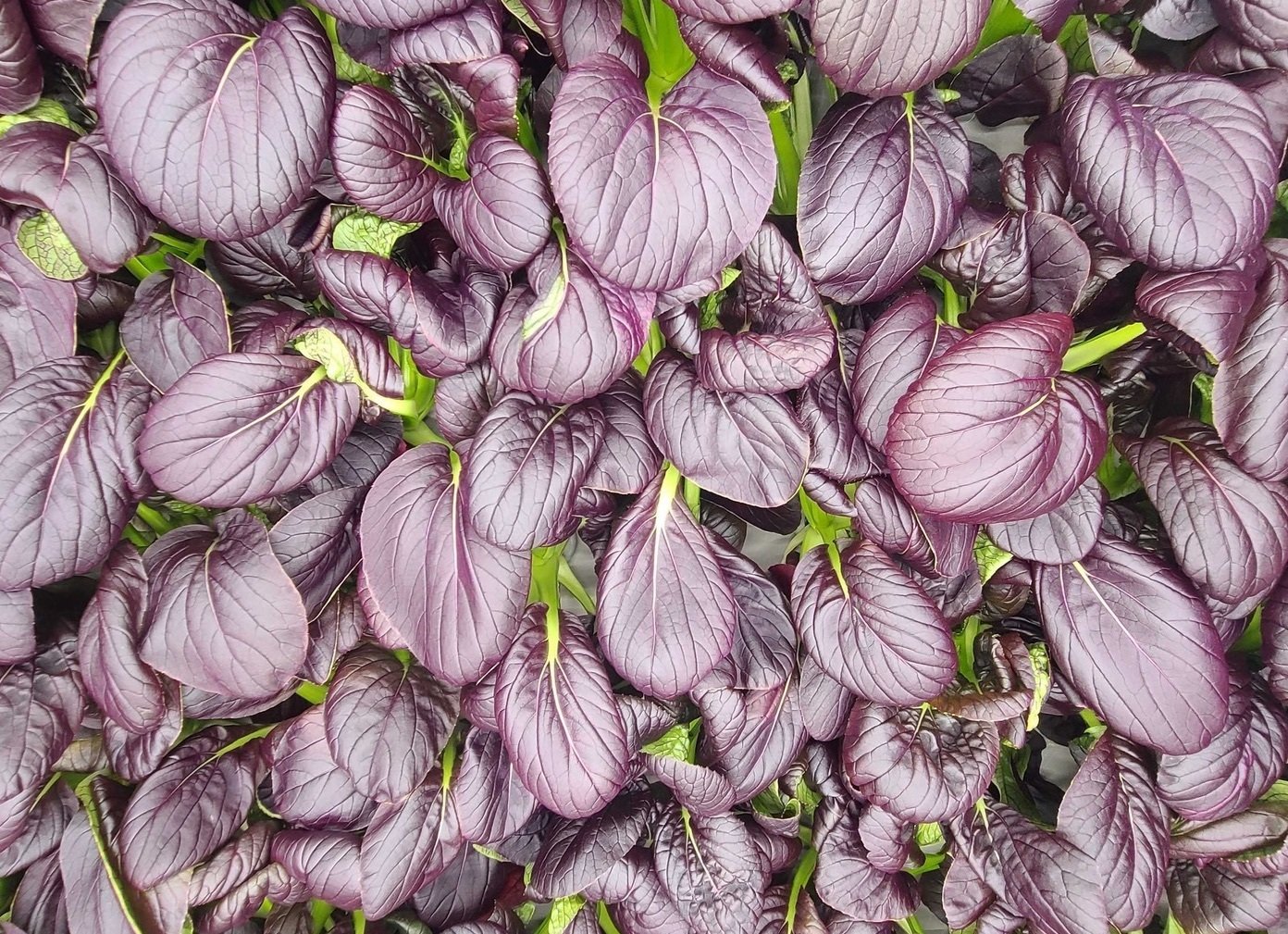What’s Up with Vertical Farming?
By Sam Bertram
CEO & Co-founder
The market is skeptical about the future of vertical farming. According to many outside observers, the vertical farming industry is failing. With recent bankruptcies, down rounds, layoffs, and woefully missed targets, I don’t blame them. However, let’s not throw the baby out with the bathwater. A few top-heavy pioneers being blown over by economic winds does not invalidate vertical farming. A few struggling US greenhouses don’t hold a candle to the billion square feet of greenhouses in the Netherlands. Let’s figure out a path forward, shall we?
Vertical Farming
Vertical farms (“VFs”) are systems that grow plants indoors, using the dimension that outdoor farms and greenhouses struggle to utilize: vertical space. Making farms 3D dramatically reduces land requirements, in a world where half of our habitable land has been transitioned—to put it kindly—to agriculture. Growing indoors also allows for circular use of resources, reducing water use by >95%, eliminating pesticides and growing any crop year-round. This also means we can farm anywhere, completely disconnecting plant production from geography for the first time. By almost all measures—like water use, food safety, product quality, production surety—vertical farming is superior to outdoor farming. One problem…in its infancy, vertical farming costs more for most crops.
VFs are competing against the oldest industry on Earth where sunlight, soil, and water are essentially free! Farmers do an incredible job, year after year, embracing and battling the cycles of Mother Nature. They’ve found ways to 10x the yield per acre of corn in the last 100 years. As I’ve always said, the food supply chain is a miracle of humanity. Ten points to farmers! On the other hand, mismanagement of natural resources and the demands of perishable supply chains have minimized incentives to nourish the population, in favor of “feeding” the population. “Food” is more abundant than it has ever been, though, in many senses, humanity has never been so unwell.
The vertical farming ‘cost of production’ problem will be solved, as it was with cars, cell phones, data storage, washing machines, microwaves, TVs, planes…need I go on? I just wish there was some clearly comparable technology that has demonstrated economic superiority over traditional farming across a number of crops and geographies. Oh wait! Greenhouses!
Greenhouses are a comparable technology that has demonstrated economic superiority over traditional farming across a number of crops and geographies. Today, greenhouses cover over 1 billion square feet of land worldwide, growing a wide variety of crops, profitably. Whether it’s in Canada, the Netherlands, Spain, or Mexico, growing plants indoors has proven to be the favorable option when growing lettuce, tomatoes, peppers, and cucumbers, with many more crops in the pipeline. Massive money continues to chase this industry as more crops move indoors. Vertical farms are essentially optimized greenhouses, illuminated exclusively by LEDs, and more precise in their control of the environment. Vertical farms and greenhouses both use LED lights and HVAC systems, with vertical farms using more of the former and less of the latter. The primary objective of vertical farms should have been to mirror greenhouse simplicity, reliability, and scalability…only in 3D. This leads us to our first misstep.
Misstep #1: Technology over tradition.
Many VF companies spent hundreds of millions of dollars developing new technology and ignored the technologies and techniques of the humble greenhouse. A decade ago, greenhouses were demonstrating lighting, irrigation and automation systems that many vertical farms spent hundreds of millions of dollars re-inventing. Stop that. The successful vertical farms will integrate existing technologies (lighting, HVAC, irrigation, automation) and innovate where it counts (AI/data analytics, genetics, environmental control).
Now, let’s figure out the business model. What does the greenhouse industry show us? A robust supply chain of business: greenhouse technology providers, greenhouse system integrators, farm owner/operators, and a produce distribution/retail network as old as the Sumerians. I’ll venture to say that VFs are likely to follow this paradigm. Therein lies the second major misstep:
Misstep #2: Food was the product, not farms.
VFs wanted it all. We all wanted to be the tech company, and the farmer, and the prop-co, and the brand, and the distributor, and the retailer. It was a grand vision, but was far too complicated to orchestrate across 10 crops, 10 geographies, and 10 new technologies. Instead, as with greenhouses, industry segments will stratify. VF companies will distill away grander plans to become technology providers for farm owners/operators. This will be a fantastic business for both parties. As technology providers, VF companies will be genuine tech companies. As a pure tech company, VFs will not fall into the financing purgatory of the tech company that sells produce. This model also enables current distributors/retailers to do what they’re incredibly good at: distributing, marketing and selling produce.
As a technology provider, we must be clear on who the customers are and which use cases express the highest returns. Let’s explore:
VF for Nursery (for Greenhouses)
Greenhouses waste 20-40% of their area “under glass” on young and unproductive plants. Moreover, providing optimal growing conditions for these young plants determines their yield and quality at harvest. By introducing VFs as the nurseries for greenhouses, yield (and therefore revenue) can increase by 60% for lettuce and potentially more for strawberries. These VF-as-a-nursery systems can vegetate and clone strawberry starter plants for the greenhouse, distributing and disrupting the current starter-crop supply chain.
VF for Production
For baby greens, microgreens and herbs, VFs are the most economical solution in many locations around the world. To achieve a 3-year return on capital (“RoC”) on a VF, the best locations are ones with low electricity prices, affordable real estate, and proximity to large populations. Soon, mushrooms, berries, and many other crops will create 3-year RoC.
VF for Supplements
Growing a wide variety of obscure plants provides a natural incubator for supplemental nutrients. Whether growing microgreens for magnesium or an edible flower for zinc, plants provide the purest source of bioavailable vitamins and minerals. Currently, supplements are oftentimes made.
VF for Plant Science
With the ability to control every element of the plant’s environment, and closely image plants frequently, tremendous advancements will be made. Trialing products for higher nutrition, climate resilience, increased yield, and more crop variety will benefit all producers and consumers.
VF for Biopharma
Don’t get me started. This use case is the production of medicines and vaccines in plants. It’s safer, more scalable, faster, and more flexible than current, mammalian-cell-based biopharmaceuticals. This is a game-changer, but I’ll convince you of that another day!
As stated earlier, vertical farms are greenhouses with more lights and less HVAC. In hot/humid regions with low electricity prices, vertical farming will soon become the technology of choice for greens, herbs, berries and some other crops. This will only happen when the vertical farm is reliable enough to ±5% of projected yields every day…for years. Given the complexity of a machine that produces life, inventing every subsystem is the least reliable path to scale. Creating a vertical farming system made up of proven lighting, HVAC, automation, and imaging solutions provides the shortest path to reliability.
To drive this point home, I believe the reliability of vertical farms is the greatest threat to unit economics. Having modeled, designed, built and operated vertical farms, a vertical farm in steady-state operations is clearly a highly profitable venture. In 2017, the question of unit economics hovered around labor, LED light electricity consumption and HVAC energy consumption. Those are now known entities, and solved problems.
Understanding this, the question “do VF economics work” can dissolve. Yes, it does. Similar to transportation, you don’t drive a boat down a freeway, and don’t fly a plane to the coffee shop. Each transportation method has its economical use case. Greenhouses don’t grow corn, and neither should vertical farms. These systems must first produce the most profitable products as we descend the steep cost curve. Which brings us to our final misstep.
Misstep #3: VFs will feed the world…soon.
If you’re looking for a VF evangelist, look no further. I’ve committed my all, professionally and financially, to this endeavor. I believe it will help feed the world and those of us who venture beyond it! BUT, it will not be nourishing the poorest billion in this decade. It has taken greenhouses half a century to feed populations en masse, yet they barely reach the poorest billion today. Of all things, it will be the distribution of robust electrical grids that will accelerate our path to ubiquitous food…cough-nuclear-cough. It will be use cases 3, 4, and 5 that make the greatest impact on the poorest billion. Nourishing and healing a billion people will take 20 years. We knew that when we started—this doesn’t even classify as a deterrent.
I hope you’ve found this post elucidating. I hope it arms you against the skeptics. I hope it arms you against the hype. I hope your belief in our industry doesn’t waver just because it is choppy. We MUST do this, and not one monumental endeavor in history conquered the mountain without great toil. In a weird way, that’s the whole point.
Best,
Sam
8 MIN READ

